There are moments in fly fishing that haunt us.
And this had been one.
One moment the gaudy Chernobyl Hopper was dancing along the surface of the shimmering riffle. The next moment it was gone, destroyed by a brook trout that went almost completely airborne at the strike.
So what?
If you fly fish for native brook trout in small streams in the Appalachians, you’ve certainly enjoyed countless rowdy strikes like this.
More Like This
But not at this scale.
This brook trout weighed probably 4 pounds.
The fight was short and brutal, the hook pulling after maybe 10 seconds.
“Damn,” I blubbered.
Joe Boyce showed little emotion.
“There will be more chances,” he said.
I hoped so. Because losing that monster fish had left me a shaking, quivering pile of goo.
Getting there
At least we had gotten to the river. A day earlier that hadn’t looked like a sure thing.
We had spent a couple of days at Whitewater Lake in Northwest Ontario, guests of the folks who run Wilderness North outfitters.
Fishing out of the company’s Striker’s Point Lodge, we’d had a blast tangling with walleyes and northern pike. But we’re all trout nuts, so were eager to get onto the next leg of the adventure, fishing for river brookies out of the company’s lodge on Miminiska Lake.
The plan had been for us to fly to Miminiska in the afternoon, fish the lake for pike and walleyes that evening, and then do the brook trout trip the next day.
But even in the middle of summer, weather in Northwest Ontario can be sketchy, so we got a sinking feeling when we saw Mark Melnyk walking toward us with a purpose as we waited lakeside with our packed year.
“Guys, you might as well get comfortable,” he said. “We’re not going anywhere this afternoon. Some weather came in up north and we’re not going to be able to get a plane in here for you.”
Melnyk is a writer and TV host, and is Wilderness North’s “chief fishing officer.” Melnyk assured us that we’d be airborne shortly after dawn the next morning, and would be fishing for monster trout a few hours later.

Sure enough, the wind laid down and we were in the air first thing the following day. The stop at Miminiska Lodge lasted just long enough for us to unload our gear and for guides Boyce and Keith Missewace to lash canoes to the struts of our float plane.
Then it was on to another lake, where we untied the boats and paddled a short way to a river inlet.
As we got to the first riffle, clouds of caddis filled the air, sending us rushing to get out of the boats and start casting.
When Matt brought an 18-inch brook trout to hand, the guides seemed unimpressed. And, shortly thereafter, when I hooked and lost my big fish, they barely seemed to notice. Only after Chris connected with a brook trout that pushed 6 pounds did Boyce finally show a bit of emotion.
“Best fish of the season,” he said, nodding approvingly.
The float took all day. We’d move quickly through slower water — although sometimes we’d fish for walleyes — then stop at riffles to target trout, finding the most success when skating big dries like Chernobyl ants and hoppers.
Melnyk said that there rarely is a need to fish sub-surface. When the fish move from the lakes into streams during a fairly short window in the summer, they are usually more than willing to look up.
The fish averaged 16-18 inches, and often pushed the magic 20-inch mark. Five- and 6-weight rods are a must to handle fish this size, both from a practical and ethical standpoint.

At one point Chris landed a 14-incher and laughed.
“In Virginia, that would be a brook trout of a lifetime. Here, it’s a baby.”
But this is not just cushy, easy fishing. The bed of the river is slick and rocky, and wading was like trying to walk on greasy bowling balls.
Melnyk said plans are to start using an inflatable drift boat for the trips, but at the time of our trip canoes were the craft of choice.
The river we were fishing wasn’t overly challenging but there were a few rapids the guides didn’t want to paddle with us in the canoes. So we would walk through the woods on moose trails—being assaulted by clouds of ravenous mosquitos that were experts at finding any piece of skin not doused in DEET—while the guides either paddled solo or lined the canoes through the rougher water.
Late in the afternoon, Boyce said the our current spot would be our last.
It had been a phenomenal day but one that had left me without a fish that cracked the 20-inch mark.
As my big fly skittered below me, a fish every bit of twenty and likely more blasted the fly. And missed.
“Noooo!!!” I blurted.
But then the fish, or one just like it, came back and that time the hookset was solid.
It ripped around the pool. It jumped. It bull-dogged. But eventually it was in the net.
We didn’t measure it. We didn’t need to. It was the brook trout of a lifetime, the kind of fish that can wipe away the haunted feeling of the one that got away.
If you go
Ontario has more than 150,000 rivers and lakes, offering world class fishing for walleyes, northern pike, lake trout and brook trout.
A gateway to the vast fishing opportunities of Northwest Ontario, Thunder Bay is a city of about 120,000 and is serviced by an international airport with dozens of daily flights, including from Toronto.
The Thunder Bay Tourism office also handles tourism for Northwest Ontario, and the office works with many outfitters that specialize in fishing, hunting and canoeing. Tourism officials can help with trip planning to fit a variety of goals and budgets.
In addition to its full-service lodges, Wilderness North also offers many outpost camps for anglers looking for more of an economical, do-it-yourself feel. At outpost camps, cabins and boats are provided but guests handle their own cooking, etc.
At lodges, guiding is typically an ala carte option, as are the fly-out brook trout trips from Miminiska lodge.
For brook trout fishing, a 5- or 6-weight fly rod will provide the backbone needed to control heavy fish in fast current. When the fish are looking up, use big dry flies such as Chernobyl hoppers and ants, Stimulators, Sofa Pillows and Bombers. Streamers and big nymphs are effective on the rare occasion when trout won’t hit dry flies.
Trout fishing on Wilderness North trips is strictly catch-and-release.

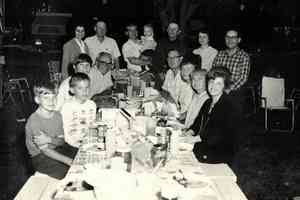
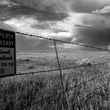
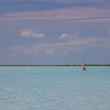
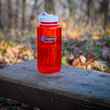

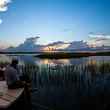
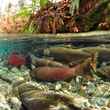

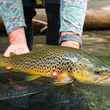

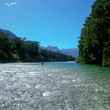
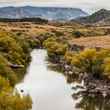
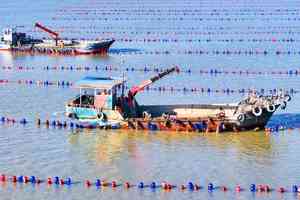
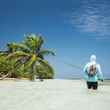

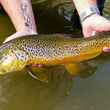

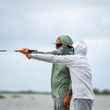
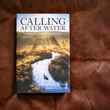
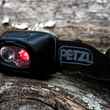
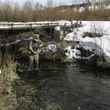
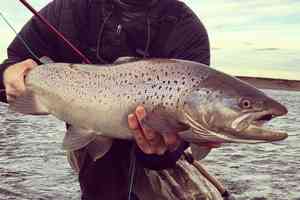
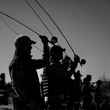
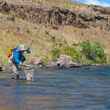
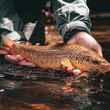
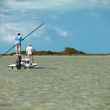

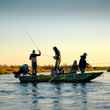
Comments